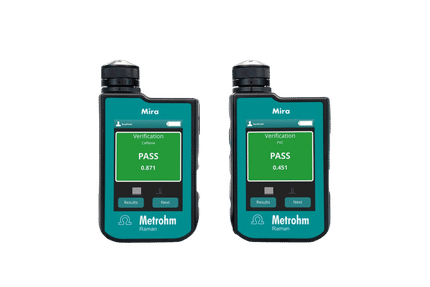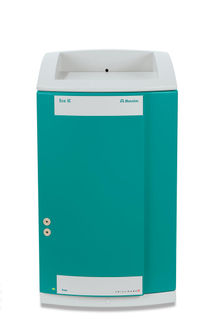An insect repellent is a substance applied to skin, clothing, or other surfaces which discourages insects (and arthropods in general) from landing or climbing on that surface. There are also insect repellent products available based on sound production, particularly ultrasound (inaudibly high frequency sounds). These electronic devices have been shown to have no effect as a pest repellent by studies done by the EPA and many universities.[1]
Insect repellents help prevent and control the outbreak of insect-borne diseases such as malaria, Lyme disease, Dengue fever, bubonic plague, and West Nile fever. Pest animals commonly serving as vectors for disease include the insects flea, fly, and mosquito; and the arachnid tick.
Common insect repellents include:
- DEET (N,N-diethyl-m-toluamide)
- Essential oil of the lemon eucalyptus and its active ingredient p-menthane-3,8-diol (PMD)
- Icaridin, also known as picaridin, Bayrepel, and KBR 3023
- Citronella oil
- Permethrin
- Soybean oil[2]
- Neem oil
Usually insect repellents work instead by masking human scent, or by using a scent which insects naturally avoid.[citation needed] Permethrin is different in that it is actually a contact insecticide.
Repellent effectiveness
Synthetic repellents tend to be more effective than 'natural' repellents.[3][4][2] However, some plant-based repellents are comparable to, or somewhat better than synthetics - depending on the formula.[5] [3][6] Essential oil repellents tend to being short-lived in their effectiveness due to their volatile nature.
A test of various insect repellents by an independent consumer organization found that repellents containing DEET or picaridin are more effective than repellents with ‘natural’ active ingredients. All the synthetics gave almost 100% repellency for the first 2 hours, where the natural repellent products were most effective for the first 30-60 minutes, and required reapplication to be effective over several hours.[7]
For protection against mosquitos, the U.S. Centers for Disease Control recommend DEET, icaridin, or oil of lemon eucalyptus for skin, and permethrin for clothing, gear, or bed nets.[8] Oil of lemon eucalyptus was found to be more effective than other plant-based treatments, and had similar effectiveness to low concentrations of DEET.
[9] However, research found that neem oil is mosquito repellent for up to 12 hours.[10] Citronella oils mosquito repellency has also been verified by research,[11] including effectiveness in repelling Aedes aegypti, [12][13], but requires reapplication after 30-60 minutes.
Repellent safety
Regarding safety with insect repellent use on children and pregnant women:
- Children may be at greater risk for adverse reactions to repellents, in part, because their exposure may be greater.
- Keep repellents out of the reach of children.
- Do not allow children to apply repellents to themselves.
- Use only small amounts of repellent on children.
- Do not apply repellents to the hands of young children because this may result in accidental eye contact or ingestion.
- Try to reduce the use of repellents by dressing children in long sleeves and long pants tucked into boots or socks whenever possible. Use netting over strollers, playpens, etc.
- As with chemical exposures in general, pregnant women should take care to avoid exposures to repellents when practical, as the fetus may be vulnerable.
Regardless of which repellent product used, it is recommended that the label is read before use and directions carefully followed.[14] Usage instructions for repellents vary from country to country. Some insect repellents are not recommended for use on younger children.[9]
In the DEET Reregistration Eligibility Decision (RED) the EPA reported 14 to 46 cases of potential DEET associated seizures, including 4 deaths. The EPA states: " ..it does appear that some cases are likely related to DEET toxicity," but observed that with 30% of the US population using DEET, the likely seizure rate is only about one per 100 million users.[15]
The Pesticide Information Project of Cooperative Extension Offices of Cornell University states that "Everglades National Park employees having extensive DEET exposure were more likely to have insomnia, mood disturbances and impaired cognitive function than were lesser exposed co-workers". [16]
The U. S. Environmental Protection Agency states that citronella oil shows little or no toxicity and has been used as a topical insect repellent for 60 years. However, the EPA also states that citronella may irritate skin and cause dermatitis in certain individuals.[17] Canadian regulatory authorities concern with citronella based repellents is primarily based on data-gaps in toxicology, not on incidents.[18]
[19]
Naturally-occurring insect repellent
There are many naturally-occurring pesticides which can be used as an insect repellent and some of these are:
See also
- Mosquito control
- Mosquito net
- Pest control
References
- Iowa State University Study: Nepetalactone 10 times more effective than DEET
Notes
- ^ EurekaAlert (April 17 2007). "Mosquito repellents that emit high-pitched sounds don't prevent bites". Press release.
- ^ a b Safety Tips on Using Personal Insect Repellents. Responsible Pesticide Use. Pest Management Regulatory Agency (Canada) (17 Sep 2004).
- ^ a b M. S. Fradin and J. F. Day (2002). "Comparative Efficacy of Insect Repellents against Mosquito Bites". N Engl J Med 347 (1): 13-18. doi:10.1056/NEJMoa011699.
- ^ Collins, D.A.; Brady, J.N.; Curtis, C.F. (1993). "Assessment of the efficacy of Quwenling as a Mosquito repellent". Phytotherapy Research 7 (1): 17-20.
- ^ Mishra AK, Singh N, Sharma VP, 1995 "Use of neem oil as a mosquito repellent in tribal villages of mandla district, madhya pradesh", Indian J Malariol, Sep;32(3):99-103 Pubmed
- ^ Collins, D.A.; Brady, J.N.; Curtis, C.F. (1993). "Assessment of the efficacy of Quwenling as a Mosquito repellent". Phytotherapy Research 7 (1): 17-20.
- ^ "Test: Mosquito Repellents, The Verdict" Choice, The Australian Consumers Association
- ^ M. S. Fradin and J. F. Day (2002). "Comparative Efficacy of Insect Repellents against Mosquito Bites". N Engl J Med 347 (1): 13-18. doi:10.1056/NEJMoa011699.
- ^ a b Insect Repellent Use and Safety. West Nile Virus. Centers for Disease Control and Prevention (12 Jan 07).
- ^ Mishra AK, Singh N, Sharma VP, 1995 "Use of neem oil as a mosquito repellent in tribal villages of mandla district, madhya pradesh", Indian J Malariol, Sep;32(3):99-103 Pubmed
- ^ Jeong-Kyu KIM, Chang-Soo KANG, Jong-Kwon LEE, Young-Ran KIM, Hye-Yun HAN, Hwa Kyung YUN, Evaluation of Repellency Effect of Two Natural Aroma Mosquito Repellent Compounds, Citronella and Citronellal, Entomological Research 35 (2), 117–120, 2005
- ^ Ibrahim Jantan, and Zaridah Mohd. Zaki, Development of environment-friendly insect repellents from the leaf oils of selected Malaysian plants, ASEAN Review of Biodiversity and Environmental Conservation (ARBEC), May 1998.
- ^ Trongtokit Y, Rongsriyan Y, Komalamisra N, Apiwathnasom L, Comparative repellency of 38 essential oils against mosquito bites, Phytother Res. 2005 Apr;19(4):303-9 [1]
- ^ "Health Advisory: Tick and Insect Repellents", Information factsheet, Department of Health, New York State
- ^ "Reregistration Eligibility Decision: DEET." U.S. Environmental Protection Agency, Office of Prevention, Pesticides, and Toxic Substances. September 1998. pp39-40
- ^ http://pmep.cce.cornell.edu/profiles/extoxnet/carbaryl-dicrotophos/deet-ext.html
- ^ U.S. EPA Citronella Factsheet. Retrieved on July 20, 2007.
- ^ (17 Sep 2004) Re-evaluation of Citronella Oil and Related Active Compounds for Use as Personal Insect Repellents. Pest Management Regulatory Agency (Canada). ISBN 0-662-38012-6.
- ^ "So Then: Who’s Afraid of Citronella Oil? Update!" Cropwatch Newsletter Vol 2,Issue 1, No. 1
- ^ Taverne, Janice (2001). "Malaria on the Web and the mosquito-repellent properties of basil". Trends in Parasitology 17 (6): 299 - 300. doi:10.1016/S1471-4922(01)01978-X.
- ^ Rahman, G. K. M. M.; N. Motoyama (1998). "Identification of the active components of garlic causing repellent effect against the rice weevil and the wheat flour beetle" (in English). Nihon Oyo Doubutsu Konchu Gakkai Taikai Koen Youshi 42: 211. Retrieved on 22 November, 2007.
- ^ Oyedele, A.O. et al. (2002). "Formulation of an effective mosquito-repellent topical product from Lemongrass oil". Phytomedicine 9 (3): 259 - 262. doi:10.1078/0944-7113-00120.
- ^ Jaenson, Thomas G. T. et al. (2006). "Repellency of Oils of Lemon Eucalyptus, Geranium, and Lavender and the Mosquito Repellent MyggA Natural to Ixodes ricinus (Acari: Ixodidae) in the Laboratory and Field". Journal of Medical Entomology 43 (4): 731 – 736. doi:[731:ROOOLE2.0.CO;2 10.1603/0022-2585(2006)43[731:ROOOLE]2.0.CO;2].
- ^ Cook, Samantha M. et al. (2007). "Responses of Phradis parasitoids to volatiles of lavender, Lavendula angustifolia —a possible repellent for their host, Meligethes aeneus". BioControl 52 (5): 591 - 598. Springer. doi:10.1007/s10526-006-9057-x.
- ^ a b Momen, F. M. et al. (2001). "Repellent and Oviposition-Deterring Activity of Rosemary and Sweet Marjoram on the Spider Mites Tetranychus urticae and Eutetranychus orientalis (Acari: Tetranychidae)". Acta Phytopathologica et Entomologica Hungarica 36 (1 - 2): 155 - 164. Akadémiai Kiadó. doi:10.1556/APhyt.36.2001.1-2.18.
- ^ Ansari, M. A. et al. (2000). "Larvicidal and mosquito repellent action of peppermint (Mentha piperita) oil". Bioresource Technology 71 (3): 267 - 271. doi:10.1016/S0960-8524(99)00079-6.
- ^ Deka, M. K. et al.. "Antifeedant and Repellent Effects of Pongam (Pongamia Pinnata) and Wild Sage (Lantana Camara) on Tea Mosquito Bug (Helopeltis Theivora)". Indian Journal of Agricultural Science. Retrieved on 22 November, 2007.
- ^ U.S. Patent 5,738,863
|







